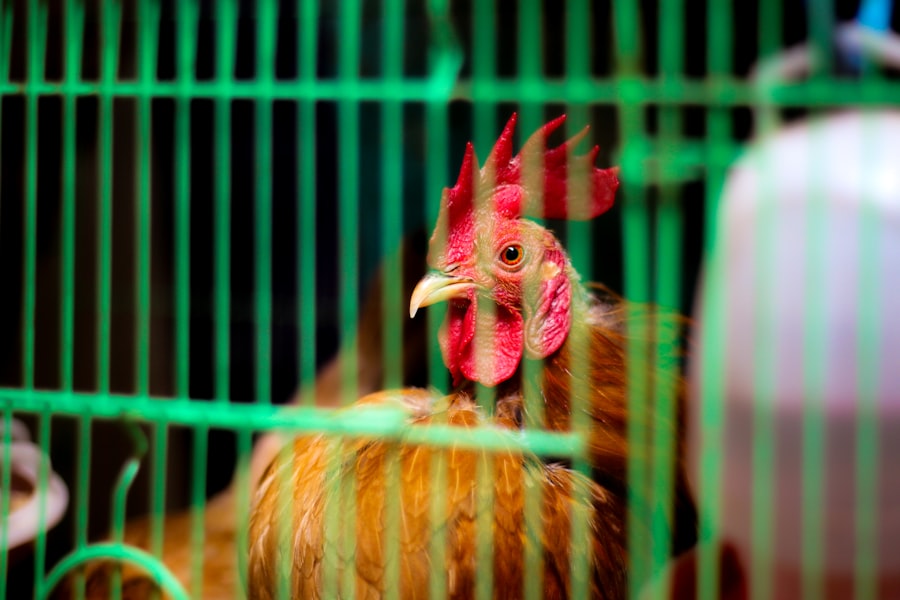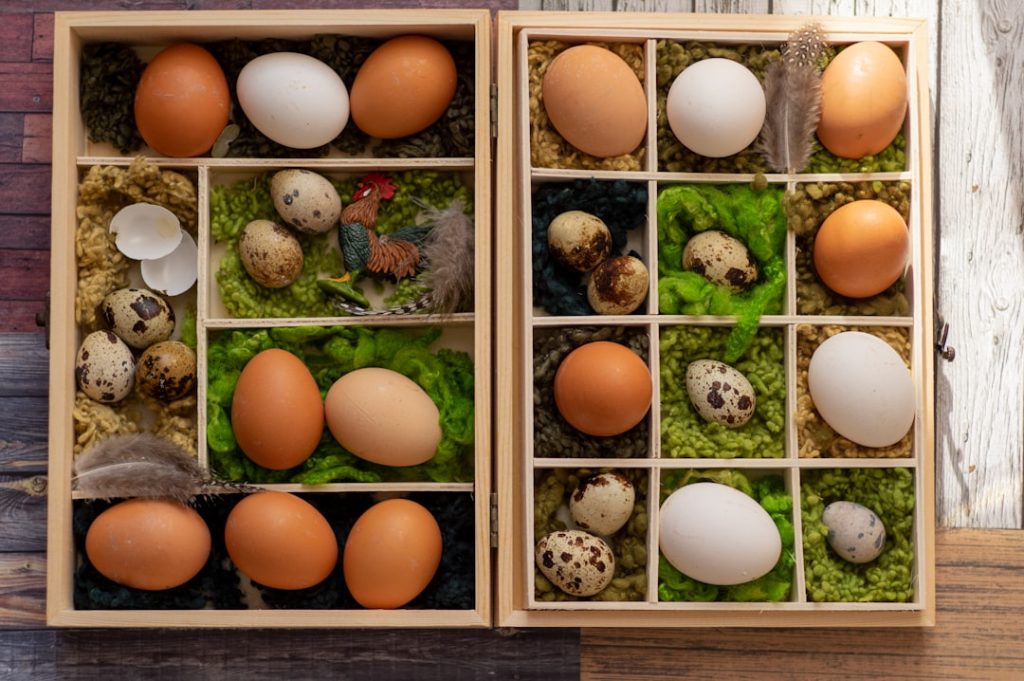Dogs and chickens possess distinct instincts shaped by their evolutionary history. Dogs, descendants of wolves, are natural predators with a strong prey drive, making them inclined to chase and potentially harm smaller animals like chickens. Conversely, chickens are prey animals with an innate fear response to potential threats, including dogs.
Understanding these instincts is essential for creating a harmonious environment where dogs and chickens can coexist peacefully. Chickens exhibit natural behaviors such as pecking and scratching the ground for food, as well as roosting in elevated areas to avoid predators. Dogs, characterized by a strong pack mentality and territorial nature, may perceive chickens as intruders in their domain and feel compelled to assert dominance.
Recognizing and working with these instincts, rather than against them, is crucial when establishing a safe and secure environment for both dogs and chickens.
Table of Contents
- 1 Creating a Secure Environment for Chickens
- 2 Training Your Dog to Respect Chickens
- 3 Providing Adequate Exercise and Mental Stimulation for Your Dog
- 4 Using Deterrents to Keep Dogs Away from Chickens
- 5 Supervising Interactions Between Dogs and Chickens
- 6 Seeking Professional Help for Persistent Behavior Issues
- 7 FAQs
- 7.1 What are some effective methods to keep dogs from eating chickens?
- 7.2 Why do dogs eat chickens?
- 7.3 How can training help prevent dogs from eating chickens?
- 7.4 What are some signs that a dog may be prone to eating chickens?
- 7.5 Are there any products or devices that can help keep dogs from eating chickens?
Key Takeaways
- Dogs and chickens have different instincts, so understanding their natural behaviors is crucial for their coexistence.
- Creating a secure environment for chickens is essential to protect them from potential harm by dogs or other predators.
- Training your dog to respect chickens involves positive reinforcement and consistent supervision to ensure their safety.
- Providing adequate exercise and mental stimulation for your dog can help reduce their prey drive and minimize the risk of chasing or harming chickens.
- Using deterrents such as fencing, motion-activated sprinklers, or bitter-tasting sprays can help keep dogs away from chickens and prevent potential conflicts.
Creating a Secure Environment for Chickens
Secure Coop and Predator-Proof Environment
Creating a secure environment for chickens is essential for their safety and well-being, especially when they are living alongside dogs. This means providing a sturdy and predator-proof coop where the chickens can roost at night and lay their eggs. The coop should have a solid floor and secure walls to keep out any potential threats, including dogs.
Safe Outdoor Space
Additionally, it’s important to provide a fenced-in outdoor area where the chickens can roam freely during the day without the risk of being attacked by dogs or other predators. In addition to a secure coop and outdoor area, it’s important to provide plenty of hiding spots and elevated perches for the chickens to escape to if they feel threatened.
Maintenance and Inspection
It’s also important to regularly inspect the coop and outdoor area for any potential weak spots or signs of intrusion by dogs or other predators. By creating a secure environment for the chickens, you can help minimize the risk of conflict with dogs and ensure their safety and well-being.
Training Your Dog to Respect Chickens
Training your dog to respect chickens is an important part of creating a harmonious environment where both animals can coexist peacefully. This involves teaching your dog to control its prey drive and to see the chickens as part of the family rather than as potential prey. One effective way to do this is through positive reinforcement training, where you reward your dog for calm and non-threatening behavior around the chickens.
Start by introducing your dog to the chickens in a controlled and supervised setting, using a leash if necessary to prevent any chasing or aggressive behavior. Reward your dog for calm and non-threatening behavior, such as sitting or lying down near the chickens without showing any signs of aggression. Over time, gradually increase the amount of time your dog spends around the chickens, always rewarding calm and non-threatening behavior.
It’s also important to set clear boundaries for your dog when it comes to interacting with the chickens. This may involve teaching your dog a “leave it” command to prevent them from chasing or harassing the chickens, as well as providing plenty of mental and physical stimulation to help redirect their energy away from the chickens. With consistent training and positive reinforcement, you can help your dog learn to respect the chickens and coexist peacefully with them.
Providing Adequate Exercise and Mental Stimulation for Your Dog
Providing adequate exercise and mental stimulation for your dog is essential for their overall well-being and can also help reduce the risk of conflict with chickens. Dogs that are under-exercised or bored are more likely to exhibit unwanted behaviors, such as chasing or harassing chickens out of sheer boredom or pent-up energy. By providing regular exercise and mental stimulation, you can help keep your dog happy, healthy, and less likely to engage in problematic behaviors around the chickens.
One way to provide exercise for your dog is through daily walks or runs, which can help burn off excess energy and prevent boredom. Additionally, engaging in interactive play with your dog, such as fetch or tug-of-war, can provide both physical exercise and mental stimulation. Puzzle toys and food-dispensing toys are also great ways to keep your dog mentally engaged and prevent boredom.
In addition to physical exercise, it’s important to provide your dog with plenty of mental stimulation to prevent boredom and unwanted behaviors. This can include training sessions, obedience classes, or even activities such as agility or nose work. By keeping your dog physically and mentally stimulated, you can help reduce the risk of conflict with chickens and create a more harmonious environment for both animals.
Using Deterrents to Keep Dogs Away from Chickens
Using deterrents can be an effective way to keep dogs away from chickens and prevent potential conflicts. There are several different types of deterrents that can be used to discourage dogs from approaching or harassing chickens, including visual, auditory, and scent-based deterrents. Visual deterrents can include things like scarecrows, motion-activated lights or sprinklers, or even brightly colored flags or tape that flutter in the wind.
These visual cues can help startle dogs and discourage them from approaching the chicken coop or outdoor area. Auditory deterrents can include things like ultrasonic devices that emit high-pitched sounds that are unpleasant for dogs but inaudible to humans. These devices can be placed near the chicken coop or outdoor area to discourage dogs from approaching.
Scent-based deterrents can include things like citrus peels, vinegar, or commercial repellents that are unpleasant for dogs but safe for chickens. These scents can be sprayed around the perimeter of the chicken coop or outdoor area to create a barrier that dogs are less likely to cross. By using a combination of visual, auditory, and scent-based deterrents, you can help discourage dogs from approaching or harassing chickens and create a safer environment for both animals.
Supervising Interactions Between Dogs and Chickens

Why Supervision is Crucial
Supervising interactions between dogs and chickens is vital for preventing potential conflicts and ensuring the safety of both animals. Even if you have trained your dog to respect the chickens, it’s essential to always supervise their interactions when they are together. This means being present whenever your dog is around the chickens and being ready to intervene if necessary.
Recognizing Signs of Stress and Aggression
When supervising interactions between dogs and chickens, it’s crucial to watch for any signs of stress or aggression from either animal. This can include things like raised hackles, stiff body language, growling, barking, or chasing behavior from the dog, as well as signs of fear or distress from the chickens. If you notice any signs of stress or aggression from either animal, it’s essential to intervene immediately by calmly but firmly redirecting your dog’s attention away from the chickens and giving them a time-out if necessary.
Positive Reinforcement and Intervention
It’s also important to provide plenty of positive reinforcement for calm and non-threatening behavior around the chickens. By supervising interactions between dogs and chickens and being ready to intervene if necessary, you can help prevent potential conflicts and ensure the safety of both animals.
Seeking Professional Help for Persistent Behavior Issues
If you are experiencing persistent behavior issues with your dog around chickens despite your best efforts at training and supervision, it may be time to seek professional help. A professional dog trainer or behaviorist can provide valuable insight into why your dog is exhibiting problematic behaviors around the chickens and offer personalized training plans to address these issues. A professional trainer or behaviorist can help identify any underlying triggers or motivations for your dog’s behavior around the chickens and provide guidance on how to address these issues effectively.
They can also offer additional training techniques or behavior modification strategies that may be more effective for your specific situation. In some cases, persistent behavior issues around chickens may be indicative of deeper behavioral problems in your dog that require professional intervention. A professional trainer or behaviorist can help assess your dog’s behavior holistically and provide guidance on how to address any underlying issues that may be contributing to their problematic behaviors around chickens.
By seeking professional help for persistent behavior issues with your dog around chickens, you can gain valuable insight into how to address these issues effectively and create a safer and more harmonious environment for both animals.
If you’re looking for more tips on keeping your chickens safe from dogs, check out this article on turning a shed into a chicken coop from PoultryWizard.com. This article provides valuable information on creating a secure and comfortable living space for your chickens, which can help prevent them from becoming prey to dogs.
FAQs
What are some effective methods to keep dogs from eating chickens?
Some effective methods to keep dogs from eating chickens include building a secure chicken coop, using a strong fence to separate the dogs from the chickens, training the dogs to leave the chickens alone, and providing enough exercise and mental stimulation for the dogs to reduce their prey drive.
Why do dogs eat chickens?
Dogs may eat chickens due to their natural predatory instincts, boredom, lack of proper training, or hunger. It is important to address the underlying reasons for the behavior in order to effectively prevent it.
How can training help prevent dogs from eating chickens?
Training can help prevent dogs from eating chickens by teaching them to respond to commands such as “leave it” or “stay” when around the chickens. Positive reinforcement training can also help redirect their attention away from the chickens and towards more appropriate behaviors.
What are some signs that a dog may be prone to eating chickens?
Signs that a dog may be prone to eating chickens include a high prey drive, a history of chasing or hunting small animals, and a lack of obedience training. It is important to assess a dog’s behavior and take preventive measures if necessary.
Are there any products or devices that can help keep dogs from eating chickens?
There are products and devices such as motion-activated sprinklers, ultrasonic deterrents, and remote training collars that can help deter dogs from approaching or harming chickens. It is important to use these products responsibly and in conjunction with proper training and supervision.
Meet Walter, the feathered-friend fanatic of Florida! Nestled in the sunshine state, Walter struts through life with his feathered companions, clucking his way to happiness. With a coop that’s fancier than a five-star hotel, he’s the Don Juan of the chicken world. When he’s not teaching his hens to do the cha-cha, you’ll find him in a heated debate with his prized rooster, Sir Clucks-a-Lot. Walter’s poultry passion is no yolk; he’s the sunny-side-up guy you never knew you needed in your flock of friends!







